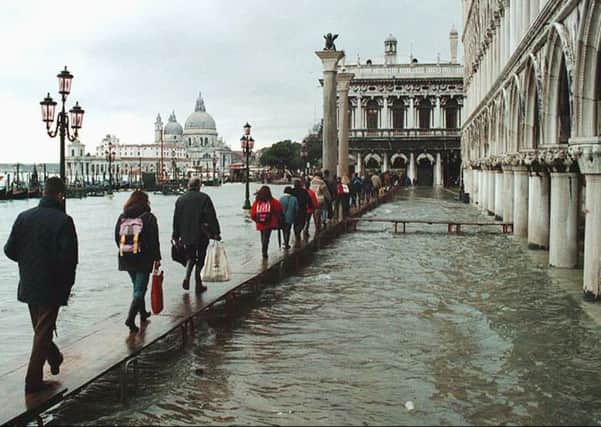Joe Wilson: Artworks sell-off a dangerous game


As a city and a museum issue close to my heart, it came as disturbing news last week to discover that Luigi Brugnaro, the Mayor of Venice, plans to sell off several masterpieces from the city’s public collection in order to help pay off some of its debt. The works considered for sale, which include pieces from Marc Chagall and Gustav Klimt, are valued at around £300 million. Although Venice’s debt is an increasing burden, the deaccession of public collections to raise funds for alternative municipal initiatives is not – and should not ever be considered – the solution.
Deaccession is a dangerous game, as was proven by the scandalous behaviour of Northampton Borough Council last year when then-leader David Mackintosh attempted to fund his vanity project – a new wing for the town’s flagship museum – by selling an ancient Egyptian statue, Sekhemka. Despite protestations from the museum itself and various pressure groups, the council forged ahead with the sale of the object. It raised just under £16 million at Christie’s in August last year.
Advertisement
Hide AdAdvertisement
Hide AdThe result of this was that, not without warning, the council’s entire museum service (Northampton Museums) lost its Arts Council England accreditation, rendering it ineligible to receive support from various heritage funding bodies and arts grants. It has also been banned from membership of the Museums Association for five years, and seen the winding up of the Friends of Northampton Museum group after 55 years of practical and financial support. It is estimated that the cost of these losses will far exceed the money raised by the sale, leaving Northampton Museum and Art Gallery and now its sister institution, Abingdon Park Museum, worse off than they were before.
The heavy sanctions handed down to Northampton Museums are in line with the disregard for museum ethics that the county council has shown. First and foremost the statue, a gift from the Marquess of Northampton to the people of the city and so held only in trust by the museum, was therefore not theirs to sell. Even if it were, to treat museum objects as assets as opposed to a collection, sets a dangerous precedent. Museum objects are to be preserved for their artistic, cultural or educational value. The actions of Northampton Museums run the risk of changing public perception of a museum collection to what Stephen E Weil once called, “A Deaccession Cookie Jar,” meaning people view the objects as material of a financial value where the money could and should be better spent on other council services, such as schools and hospitals; a mindset with the potential to strip museums bare.
This is sadly what is now happening in Venice. With the city in huge debt and struggling to fund its municipal services, Luigi Brugnaro has cracked open the Deaccession Cookie Jar and pulled out several important masterpieces from the public collection. While still inexcusable, Northampton Borough council at least intended to keep the money from Sekhemka’s sale within their museum service. Venice on the other hand, should the sale of their works go ahead, will siphon the money into other things, leaving their museums culturally and financially out of pocket. On top of this, by placing other public services on a higher pecking order, the city surrenders all justification for preserving any of its collections should the public demand more sales to be made. Given that such action provides only short-term debt relief, it is entirely possible this could occur.
Brugnaro’s attempts to safeguard the majority of the collection whilst justifying these particular sales by claiming that, “they are not directly related to the history and culture of Venice” is merely further problematic. Using this logic, Venice has created two different sets of museum ethics, one for native objects and another for those of foreign origins. The result of this is that by publicly proclaiming it’s permissible for them to deaccession non-Venetian objects, they surrender one of their key counter-arguments to potential repatriation requests, further endangering their collections.
Above all, this is simply a saddening cultural loss for the city. Venice has long since ceased to be the merchant trading hub that may once have applauded such capitalist endeavour, and is now limited in the way that it functions. It is a UNESCO world heritage site in its entirety, meaning renovation is not permitted, only preservation and restoration. However, the city has flourished under these restrictions for a long, long time as a city of art. Its beautiful exteriors are works of art in themselves, while the awkward interiors of its plethora of palazzi are filled with everything from Greco-Roman antiquity to world famous contemporary artists.
I once heard Venice described as “like a Disneyland for grown ups,” but you could safely bet you would never see a cash-strapped Disneyland Paris packing up and selling Space Mountain just because it wasn’t related to any of their films. For Venice to sell its art is to sell part of its soul. Brugnaro rightly points out that Venice is a sinking city, but shipping out its paintings will not keep it afloat. In doing so, Brugnaro will be no better than his predecessors, who shamefully green-lit allowing cruise ships to sail through the Guidecca Canal, causing irreparable damage to the city for short-term financial gain.
• This is an edited article from I Think Of Icarus, a museum blog run by Glasgow-based writer Joe Wilson. http://ithinkoficarus.com/